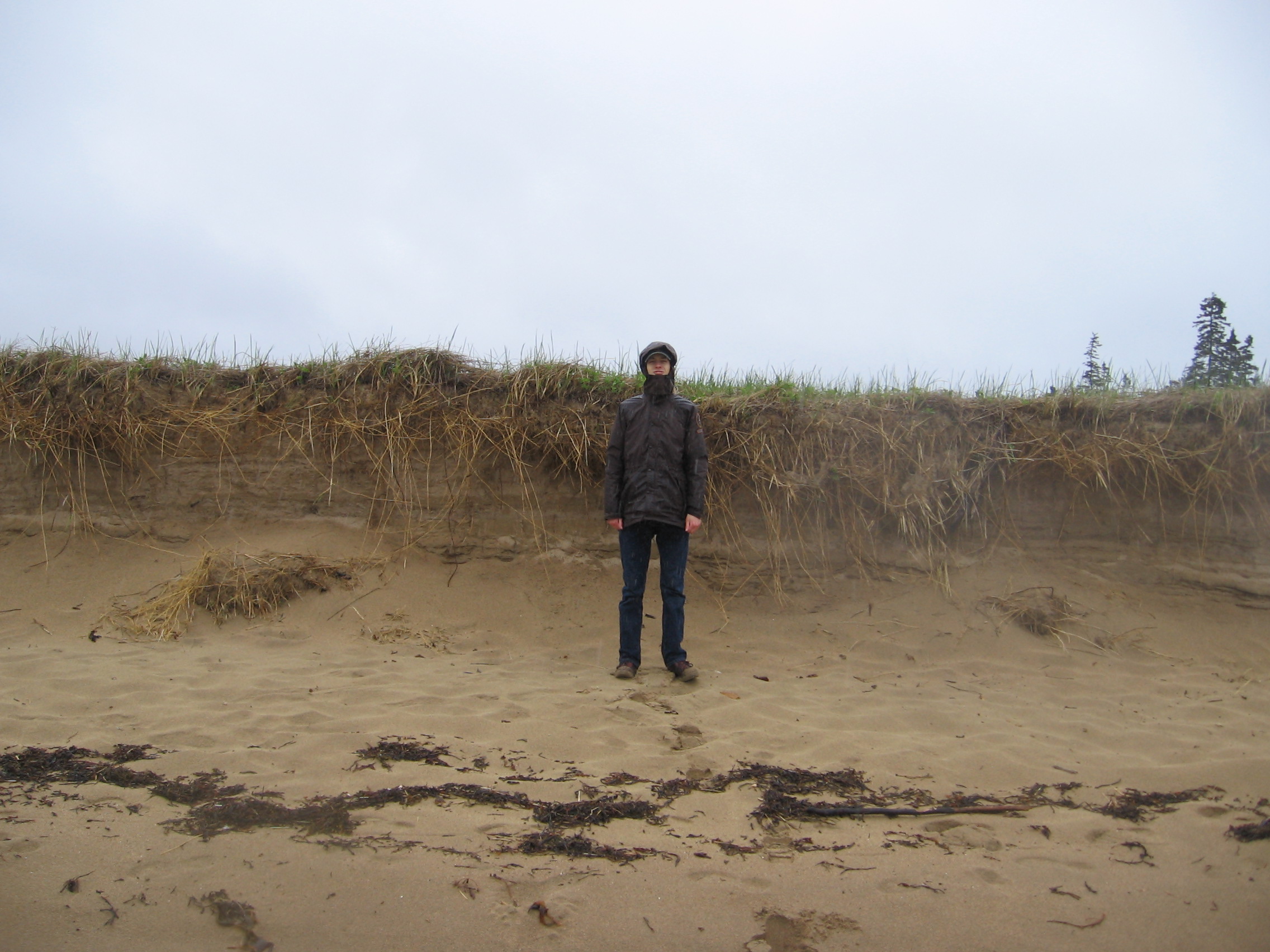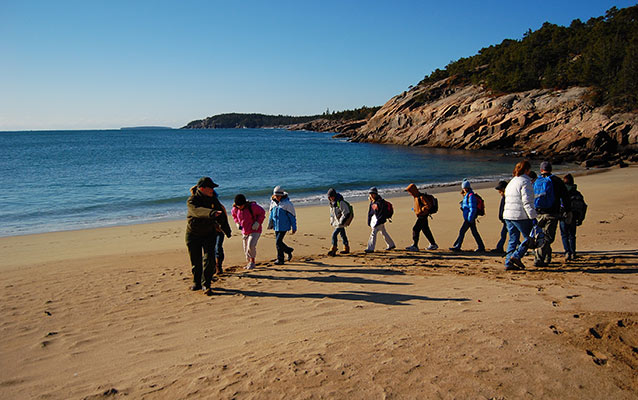Activities in this three hour program are organized into four stations. At Station One students conduct a sand magnification weathering investigation. They share their observations in a group brainstorming session on the possible sources for sand. Each student is given a journal to record their thoughts and observations. They learn about physical and chemical weathering of shells through a simple experiment. Next, students participate in an ocean erosion relay race to see how water is moving the sand from the sea, building up a beach. This leads to a discussion of wave energy and its role in depositing sand. The role of wave energy and the impact of storms are demonstrated by the ranger with a "beach in a jar" activity. This concept is further illustrated when students dig for buried "treasure".
At Station Two students work in small teams to build a model of a topographical map then compare their map to the surrounding landscape. Boys and girls act out how sand moves in the wind as they do a wind erosion relay at Station Three. The class hikes into the nearby forest to examine types of sediment other than sand. In the Sediment Size Line Up activity classmates work together to compare the relative sizes of sediment categories. The ranger reinforces this with a sediment sieve to separate out the different sizes of sediment in a soil sample.
To reach Station Four the group hikes up a challenging section of the Great Head Trail. On a granite ledge they are treated to a spectacular view of Sand Beach, the Beehive and beyond. What does one notice from this new perspective of the landscape? What could have sculpted out this big flat shelf, or valley, of land that deposited sand made into a beach? What created the rounded shapes of the mountains and valleys? Students use clay and ice to replicate and understand the glacial evidence before them.
Students leave Acadia with first-hand knowledge of how weathering and erosion have shaped their surroundings and how we can use maps to describe these places. They will have tools to solve the mysteries of how other landscapes in Acadia and at home were shaped over time.



